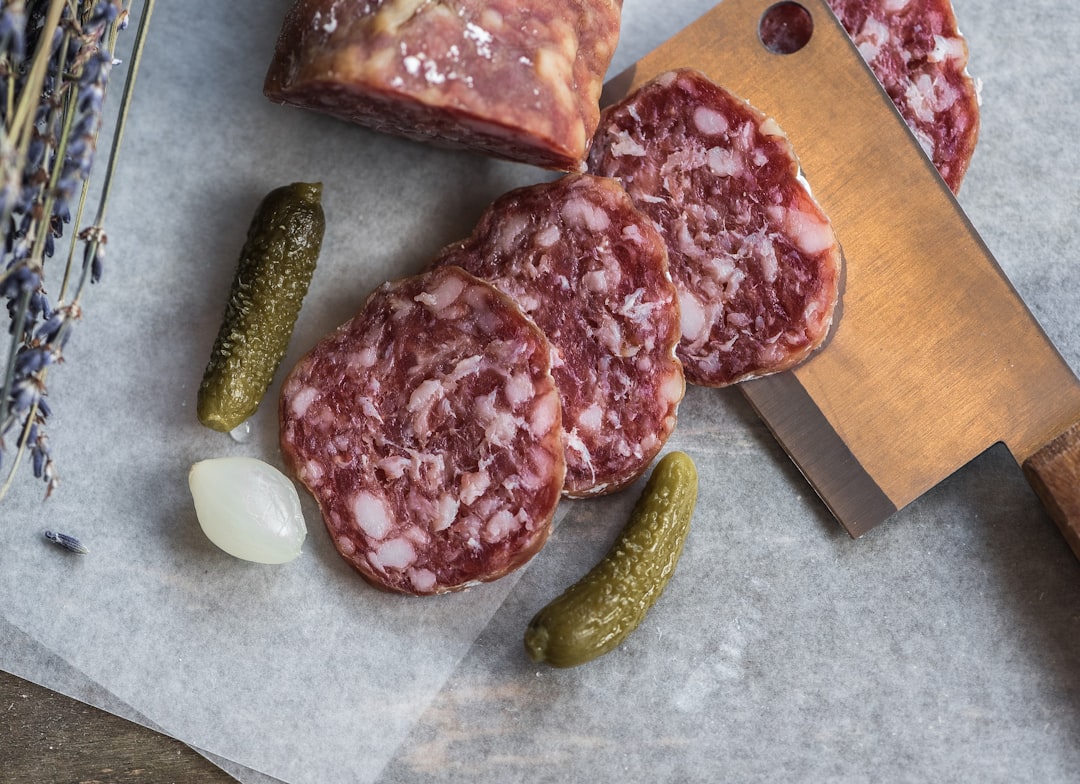Meat processing is a complex blend of traditional craftsmanship and modern technology, transforming raw livestock into a variety of delicious and safe products for consumers. In Germany, traditional butchery is renowned for its rich history and high-quality products, such as sausages and cured meats. This blog post will explore the journey of meat from livestock to the butcher shop, focusing on traditional German butchery techniques and the modern practices that complement them.
Livestock to Slaughterhouse
The journey begins on farms where livestock is raised. In Germany, many farms focus on sustainable practices and high animal welfare standards, ensuring that the meat is not only delicious but also produced responsibly. Once the animals are ready, they are transported to slaughterhouses where the initial processing takes place.
Slaughterhouse and Initial Processing
In a slaughterhouse, animals are humanely slaughtered, and the carcasses are then processed to remove unwanted parts. This includes dehairing, evisceration, and splitting the carcass into halves or quarters. The carcasses are then cooled to prevent bacterial growth and ensure food safety.
Butchery and Meat Preparation
Once the carcasses reach the butcher shop, skilled butchers take over. They use techniques such as cutting, boning, and trimming to create various cuts of meat. Traditional German butchers are particularly known for their expertise in sausage making, which involves blending meats with spices and herbs, then filling them into casings.
Traditional German Butchery Techniques
-
Sausage Making: German butchers are famous for their sausages, with over 1,500 varieties. Techniques like filling casings and linking sausages are passed down through generations, ensuring each sausage has a unique flavor and texture.
-
Curing and Smoking: Many German meats are cured or smoked to enhance flavor and extend shelf life. This includes products like Leberkäse (meatloaf) and various types of ham.
-
Dry Aging: Some German butchers also use dry aging to mature meat, which involves hanging it in a controlled environment to develop intense flavors and tender textures.
Challenges Facing Traditional Butchery
Despite its rich heritage, traditional butchery faces challenges. Younger generations are often deterred by the physically demanding nature of the job and the long hours involved. Additionally, the decline in apprenticeships threatens the continuation of traditional techniques and recipes.
Modern Practices and Innovations
To adapt to changing times, modern butcheries incorporate advanced technology and innovative practices:
-
Efficient Processing: Modern machinery helps streamline the processing of meat, ensuring efficiency and consistency in product.
-
Quality Control: Strict quality control measures are implemented to ensure that all products meet high standards of freshness and safety.
-
Sustainability: Many butcher shops focus on sourcing meat from local farms, promoting sustainability and supporting local economies.
Conclusion
The art and science of meat processing, particularly in traditional German butchery, represent a blend of historical techniques and modern innovations. From the careful handling of livestock to the precise craftsmanship in the butcher shop, each step is crucial in creating the high-quality meat products that Germany is famous for. As the profession evolves, it's essential to balance tradition with modern practices to ensure the continuation of these culinary traditions.
Citations:
- https://www.burggasthof-hauptmann.de/en/the-burggasthof/butchery/
- https://www.smithsonianmag.com/arts-culture/for-german-butchers-a-wurst-case-scenario-11839584/
- https://www.youtube.com/watch?v=uiWtT3pgN6k
- https://talkpal.ai/culture/german-culinary-techniques-language-learning-through-cooking/
- https://sustainablefoodtrust.org/news-views/the-kindness-of-butchers-pt-1/
- https://www.bbc.com/worklife/article/20190718-why-young-germans-think-this-career-is-the-wurst
- https://www.butchersfridge.co.uk/blog/butcher-the-art-and-science-of-meat-handling/
- https://de.gigexchange.com/services/home-services/butcher/germany
- https://bishbashbangers.com/mettwurst-german-sausage/
- https://german-meat.org/fleisch-aus-deutschland-gb/slaughtering-and-cutting.html
- https://butcherschool.co.za/advanced-course-to-fresh-meat-processing/
- https://www.fao.org/4/x6556e/X6556E05.htm
- https://sustainablefoodtrust.org/news-views/small-abattoirs-in-germany-you-get-what-you-pay-for/
- https://www.euromeatnews.com/Article-Livestock-and-meat-production-in-Germany/5918
- https://www.dw.com/en/germany-meat-industry-statistics/a-53876016
- https://www.thuenen.de/en/thuenen-topics/livestock-farming-and-aquaculture/nutztierhaltung-und-fleischproduktion-in-deutschland
- https://www.euronatur.org/fileadmin/docs/docs_english/EuroNatur_Abstract_Hygiene_english.pdf
- https://www.linkedin.com/pulse/art-meat-science-professional-butcher-knowledge-baba-ajudeen-borhan
- https://www.youtube.com/watch?v=5_PtT8DzGlg

Comments
No comments yet. Be the first to comment!
You must be logged in to comment. Login